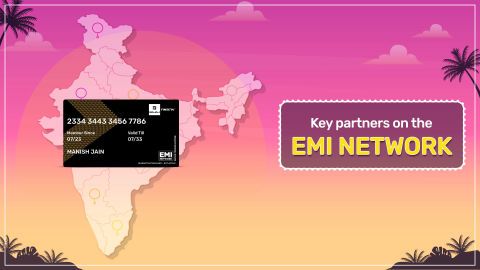When comparing the Snapdragon 4 Gen 2 to the Snapdragon 7 Gen 1, it is clear that each SoC is designed for different segments of the market, tailored to varying needs and budgets. The Snapdragon 4 Gen 2, with its entry-level positioning, offers essential performance for budget-friendly smartphones, ensuring smooth operation for everyday tasks. It features a modest CPU and GPU configuration that provides adequate power for basic applications, social media, and light gaming. Additionally, its support for LPDDR4x memory and 4G connectivity makes it a solid choice for those seeking reliable performance without breaking the bank. For those interested in exploring budget-friendly Snapdragon processor phones, check out
Snapdragon processor phones.
In contrast, the Snapdragon 7 Gen 1 steps up the game with its mid-range capabilities, designed to deliver enhanced performance and efficiency. It boasts a more advanced CPU architecture and a higher GPU frequency, making it suitable for more demanding applications and intensive multitasking. The support for LPDDR5 memory, faster 5G speeds, and superior multimedia capabilities make the Snapdragon 7 Gen 1 a preferred choice for users who demand more from their devices. This SoC is ideal for those who enjoy gaming, high-resolution video streaming, and utilising multiple apps simultaneously. For those considering an upgrade to the latest high-performance Snapdragon processors, exploring
Snapdragon 8 Gen 3 mobile phones might offer insights into cutting-edge technology.
Technical specifications - Snapdragon 4 Gen 2 vs Snapdragon 7 Gen 1
General info
The Snapdragon 4 Gen 2 and Snapdragon 7 Gen 1 are both impressive SoCs, each catering to different market segments. The Snapdragon 4 Gen 2 is designed for entry-level smartphones, offering essential features at a budget-friendly price, while the Snapdragon 7 Gen 1 targets mid-range devices with more advanced capabilities and performance enhancements.
| Specification | Snapdragon 4 Gen 2 | Snapdragon 7 Gen 1 |
| Announced | 26 June 2023 | 20 May 2022 |
| Class | Entry-Level | Mid-range |
| Model number | SM4450 | SM7350-AB |
| Brand | Qualcomm | Qualcomm |
CPU
The CPU architectures of these two SoCs differ significantly, with the Snapdragon 4 Gen 2 featuring a more basic design to prioritise efficiency and cost, while the Snapdragon 7 Gen 1 incorporates a more advanced architecture, enabling higher performance and better power management suitable for demanding applications and multitasking.
| Specification | Snapdragon 4 Gen 2 | Snapdragon 7 Gen 1 |
| Architecture | 64-bit ARMv8-A | 64-bit ARMv9-A |
| Cores | 8 (2x Cortex-A78 + 6x Cortex-A55) | 8 (1x Cortex-A710 + 3x Cortex-A710 + 4x Cortex-A510) |
| Frequency | Up to 2.0 GHz | Up to 2.5 GHz |
| Instruction set | ARMv8 | ARMv9 |
| Process | 4 nm | 5 nm |
| TDP (Sustained power limit) | 4W | 5W |
| Manufacturing | Samsung | TSMC |
Graphics
In terms of graphics, the Snapdragon 4 Gen 2 uses a more modest GPU configuration suitable for basic graphical tasks, whereas the Snapdragon 7 Gen 1 boasts a more powerful GPU that supports better graphics rendering and smoother gameplay for mobile gaming enthusiasts.
| Specification | Snapdragon 4 Gen 2 | Snapdragon 7 Gen 1 |
| SoC | Adreno 613 | Adreno 642L |
| GPU name | Adreno | Adreno |
| Architecture | Adreno 600 | Adreno 600 |
| GPU frequency | 650 MHz | 950 MHz |
| Execution units | 2 | 3 |
| Shading units | 128 | 384 |
| Total shaders | 128 | 384 |
| FLOPS | 300 GFLOPS | 700 GFLOPS |
| Vulkan version | 1.1 | 1.1 |
| OpenCL version | 2.0 | 2.0 |
| DirectX version | 12 | 12 |
Memory
The memory specifications highlight the differences in the target applications of these SoCs. The Snapdragon 4 Gen 2 offers sufficient memory capabilities for standard usage, while the Snapdragon 7 Gen 1 supports higher memory speeds and capacities, making it ideal for more intensive applications and multitasking.
| Specification | Snapdragon 4 Gen 2 | Snapdragon 7 Gen 1 |
| Memory type | LPDDR4x | LPDDR5 |
| Memory frequency | 2133 MHz | 2750 MHz |
| Bus | 64-bit | 64-bit |
| Max bandwidth | 17 GB/s | 34.1 GB/s |
| Max size | 8 GB | 16 GB |
Multimedia (ISP)
Multimedia capabilities are essential for modern smartphones, and both SoCs cater to this need. The Snapdragon 4 Gen 2 supports decent camera and video functionalities, while the Snapdragon 7 Gen 1 takes it further with enhanced support for higher resolution displays and advanced video codecs, catering to more demanding multimedia requirements.
| Specification | Snapdragon 4 Gen 2 | Snapdragon 7 Gen 1 |
| Storage type | UFS 2.1 | UFS 3.1 |
| Max display resolution | 1080p | 1440p |
| Max camera resolution | 48 MP | 64 MP |
| Video capture | 1080p @ 60fps | 4K @ 30fps |
| Video playback | 1080p | 4K |
| Video codecs | H.264, H.265 | H.264, H.265, VP9 |
| Audio codecs | AAC, aptX | AAC, aptX, LDAC |
Connectivity and network
Connectivity features are vital for any SoC, and both Snapdragon 4 Gen 2 and Snapdragon 7 Gen 1 offer comprehensive connectivity options. The Snapdragon 4 Gen 2 provides essential network support, while the Snapdragon 7 Gen 1 includes advanced features like faster 5G speeds and improved navigation support.
| Specification | Snapdragon 4 Gen 2 | Snapdragon 7 Gen 1 |
| Modem | X12 LTE | X53 5G |
| 4G support | Yes | Yes |
| 5G support | No | Yes |
| Download speed | Up to 600 Mbps | Up to 3.7 Gbps |
| Upload speed | Up to 150 Mbps | Up to 1.6 Gbps |
| Wi-Fi | 5 | 6 |
| Bluetooth | 5.1 | 5.2 |
| Navigation | GPS, GLONASS | GPS, GLONASS, Galileo, BeiDou |
Benchmarking - Snapdragon 4 Gen 2 vs Snapdragon 7 Gen 1
Benchmark comparisons between the Snapdragon 4 Gen 2 and Snapdragon 7 Gen 1 reveal the significant performance gap. The Snapdragon 7 Gen 1 generally scores higher due to its advanced architecture and superior hardware, making it more suitable for demanding applications and gaming.
AnTuTu 10
AnTuTu 10 benchmarks provide a detailed performance breakdown across various components. The Snapdragon 4 Gen 2 shows decent performance for everyday tasks, while the Snapdragon 7 Gen 1 excels in CPU, GPU, memory, and overall UX, offering a smoother and more responsive user experience.
| Specification | Snapdragon 4 Gen 2 | Snapdragon 7 Gen 1 |
| CPU | 120,000 | 250,000 |
| GPU | 100,000 | 200,000 |
| Memory | 60,000 | 150,000 |
| UX | 80,000 | 170,000 |
| Total score | 360,000 | 770,000 |
GeekBench 6
GeekBench 6 tests highlight the CPU performance in various scenarios. The Snapdragon 7 Gen 1 outperforms the Snapdragon 4 Gen 2 in asset compression, HTML5 browsing, PDF rendering, and image processing, demonstrating its superiority in handling complex and intensive tasks.
| Specification | Snapdragon 4 Gen 2 | Snapdragon 7 Gen 1 |
| Asset compression | 1500 | 3200 |
| HTML 5 browse | 1400 | 3100 |
| PDF render | 1300 | 3000 |
| Image detection | 1200 | 2800 |
| HDR | 1000 | 2600 |
| Background blur | 900 | 2400 |
| Photo processing | 800 | 2200 |
| Ray tracing | 700 | 2000 |
3DMark
3DMark benchmarks assess the graphical capabilities of the SoCs. The Snapdragon 4 Gen 2 offers reasonable stability and graphics performance for entry-level devices, while the Snapdragon 7 Gen 1 delivers superior graphics rendering and higher scores, making it ideal for more graphically intensive applications and gaming.
| Specification | Snapdragon 4 Gen 2 | Snapdragon 7 Gen 1 |
| Stability | 85% | 90% |
| Graphics test | 1500 | 3500 |
| Score | 4500 | 9500 |
Explore Snapdragon mobiles on the lowest EMI from Bajaj Finserv
Bajaj Mall is the best online destination for you to read about all the details, features, and specs of Snapdragon mobiles. Once you have gathered all the information you want, head to the nearest Bajaj Finserv partner store and select the Snapdragon mobile you want. Use the Bajaj Finserv Insta EMI Card which comes with a pre-approved card limit of up to Rs. 3 lakh to make the payment. You can choose a convenient repayment tenure of your choice and repay your purchase in interest-free EMIs.
Advantages of shopping using the Bajaj Finserv Insta EMI Card
Competitive prices: Bajaj Finserv offers competitive pricing, ensuring that your purchase is budget-friendly.
Low Cost EMIs: With the
Bajaj Finserv Insta EMI Card, buying your desired product becomes hassle-free. Choose a preferred tenure between 1 month to 60 months and repay in interest-free EMIs.
Zero down payment: Forget about the hassles of an initial lump sum payment as select products are covered under the zero down payment policy.
Options and accessibility: Buying your favourite products have never been this easy! The Bajaj Finserv EMI Network hosts over 1 million products, available at 1.5 lakh+ partner stores, across 4,000+ cities.
Exciting deals and cashback offers: By using the Bajaj Finserv Insta EMI Card to purchase your desired product, you gain access to exciting deals and cashback offers.
Free home delivery: To add to your convenience, select products are delivered free of cost.
Mobile by brandsMobile by budget5G Mobiles by brand5G Mobiles by budget











